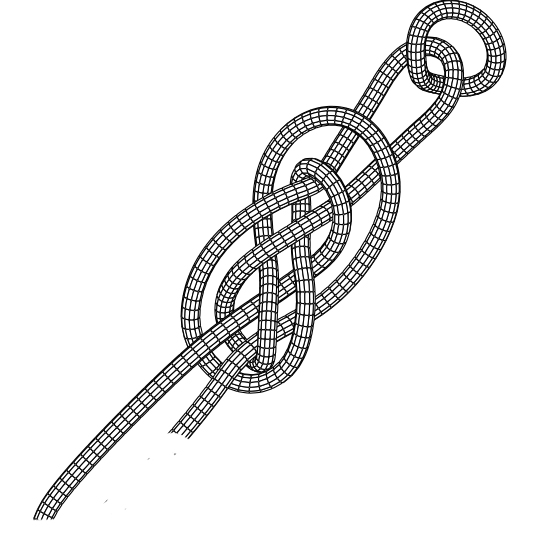Chapter 7: Making Knots
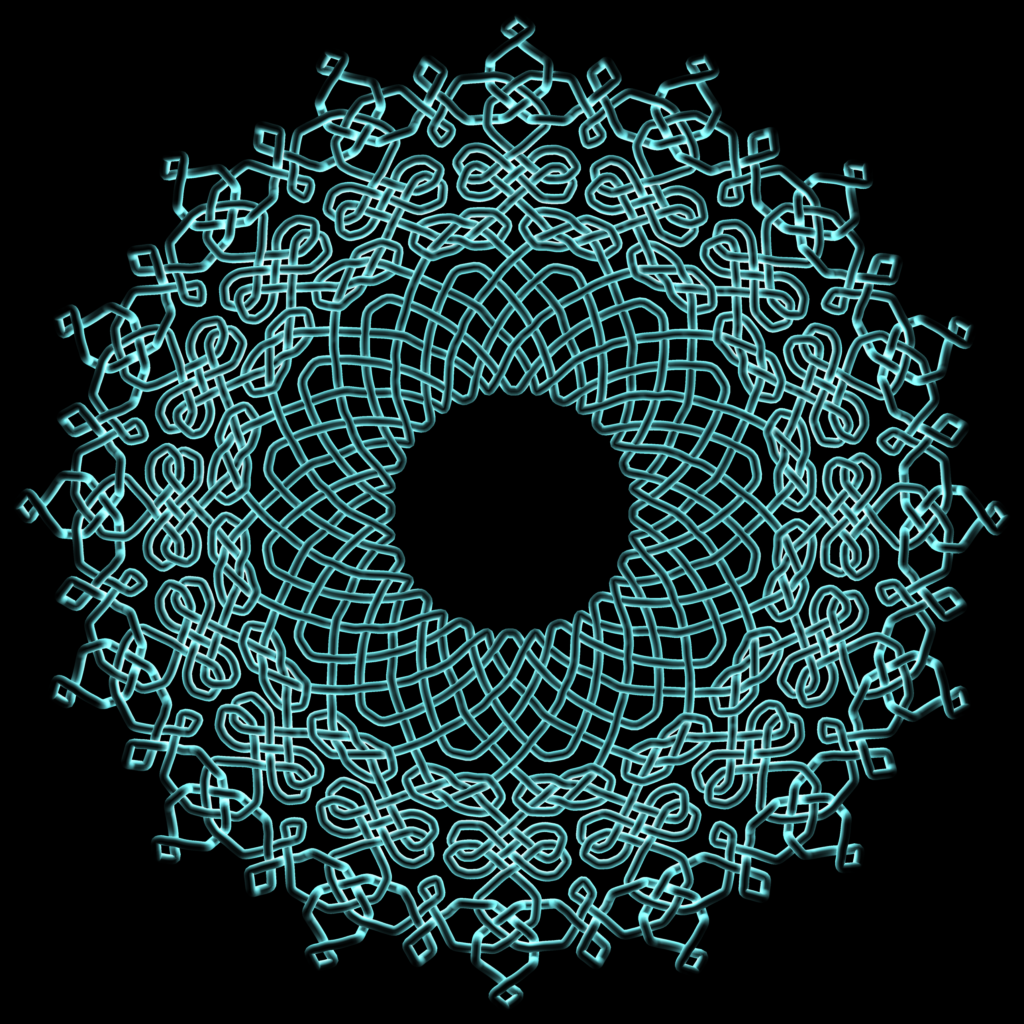
If you tie a knot just as was done for the trefoil and figure eight in Chapter 2, but you twist around more times before bringing the end up through the opening at the top, you will tie a member of the class of knots known as twist knots. Here is another view of this sort of knot. They can be classified by counting the number of twists. The spot where the two loops are forming a clasp is sometimes referred to as, well, the clasp. The first picture shows the twist with the clasp undone; this is the unknot (untwist it and it becomes just a simple loop). With the clasp done, as it is in the second picture, it cannot be unknotted without cutting the rope. The third image is another way to construct a twist knot — one of the loops in the clasp has been. elongated. We also have a picture of the figure eight knot tied in this fashion.
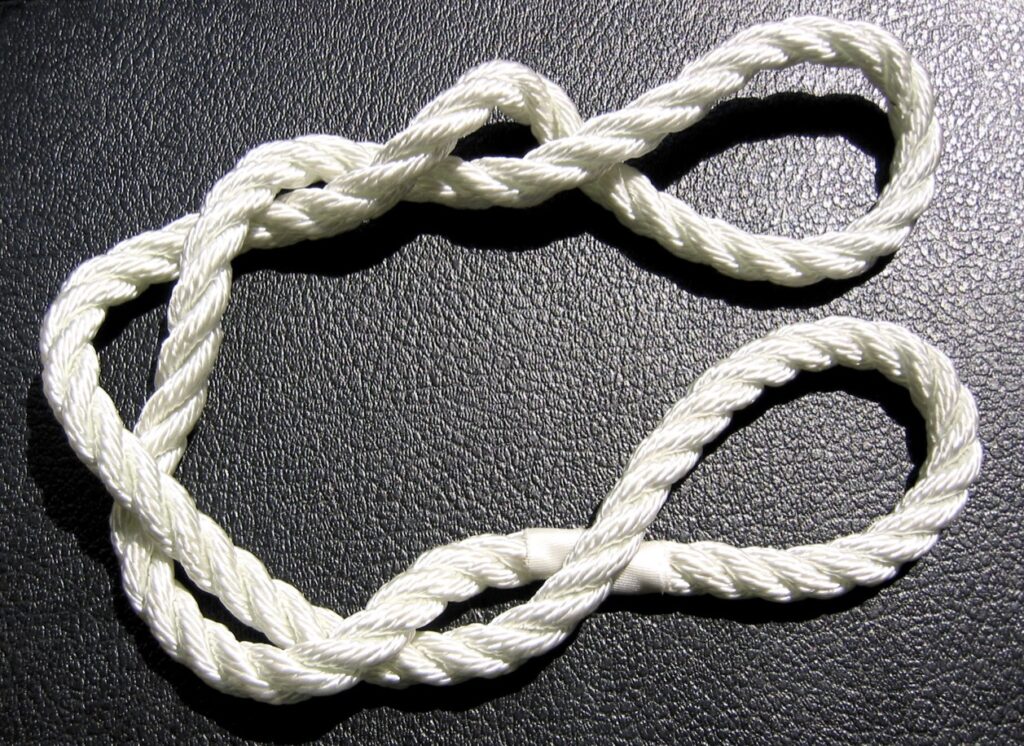
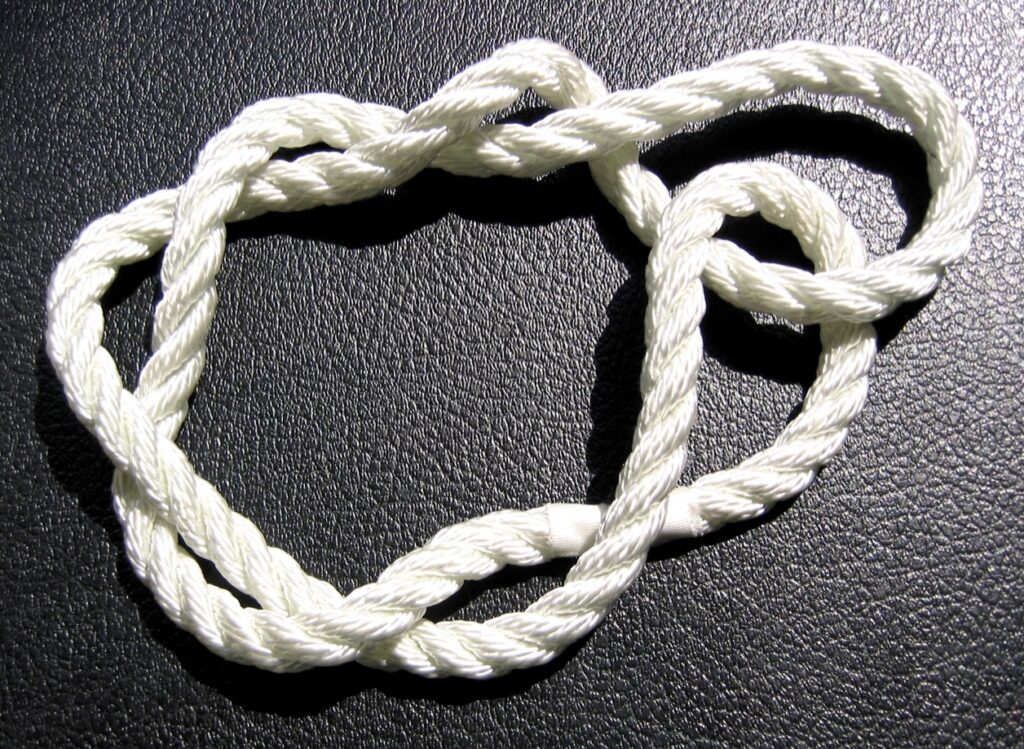
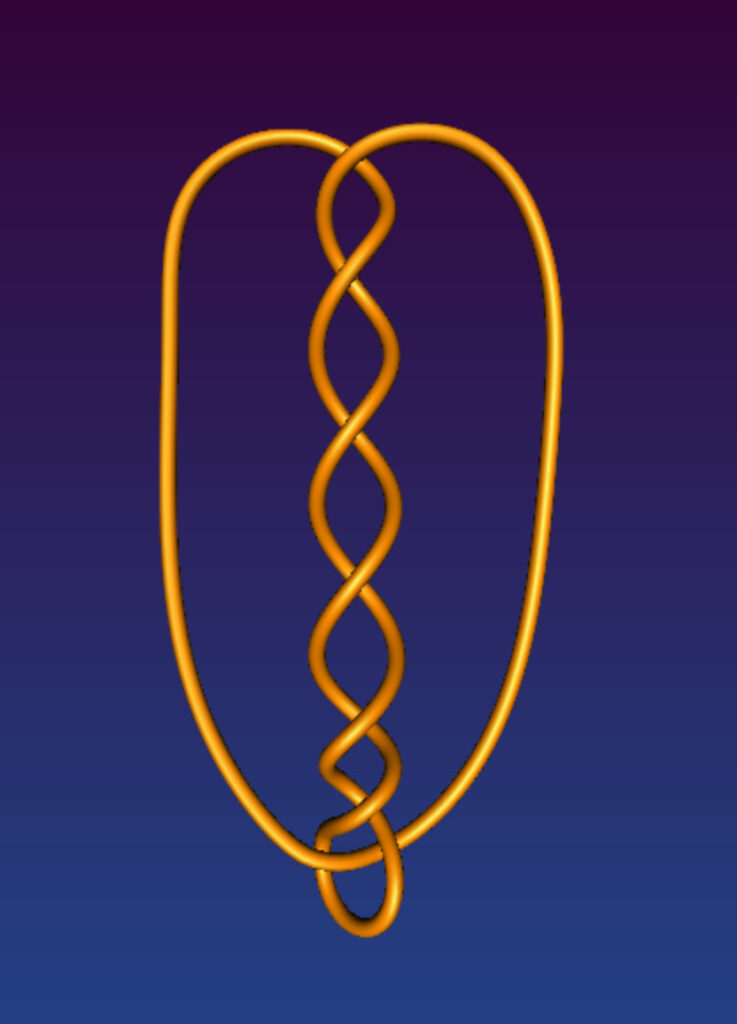

Another way to tie a knot is to use twists, but not the clasp. Perhaps the easiest way to tie these is to lay the cord on a table. Using about half the length of the cord, make an approximate circle. Then with the rest of the cord, go around the circle again, twisting around the original circle some number of times. When you have completed the trip around the circle the second time, join the open ends. You will tie a member of what is called a 2,q torus knot. The 2 is because you went around twice, the q is the number of twists you put in, and the torus is because the knot can be put on the surface of a torus. A torus is the shape of a donut or innertube.
This is a trefoil on the surface of a torus. With a torus knot this can be done without the string intersecting itself on the surface of the torus.

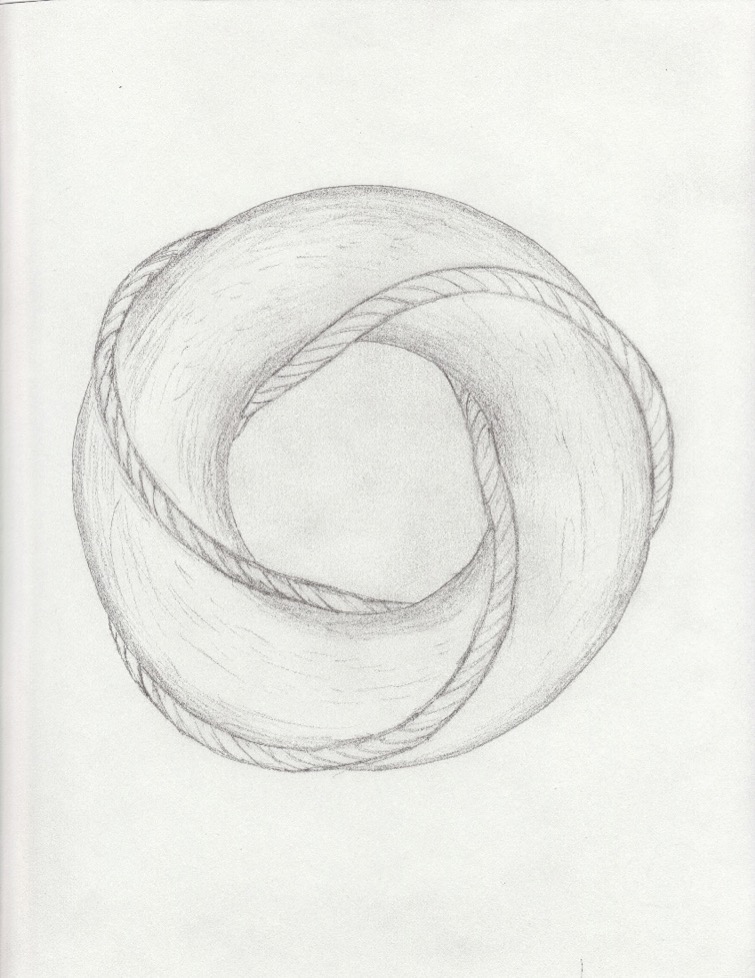
Torus knots and links can be described by two numbers (p,q). p is how many times the string or strings go around the hole in the middle (coiling). q is how many times a string goes around the tube each time it goes around the hole (twisting). In the chart below, the codes for the six tangles in the top row are: (2,2), (2,3), (2,4), (2,5), (3,3), (2,6).
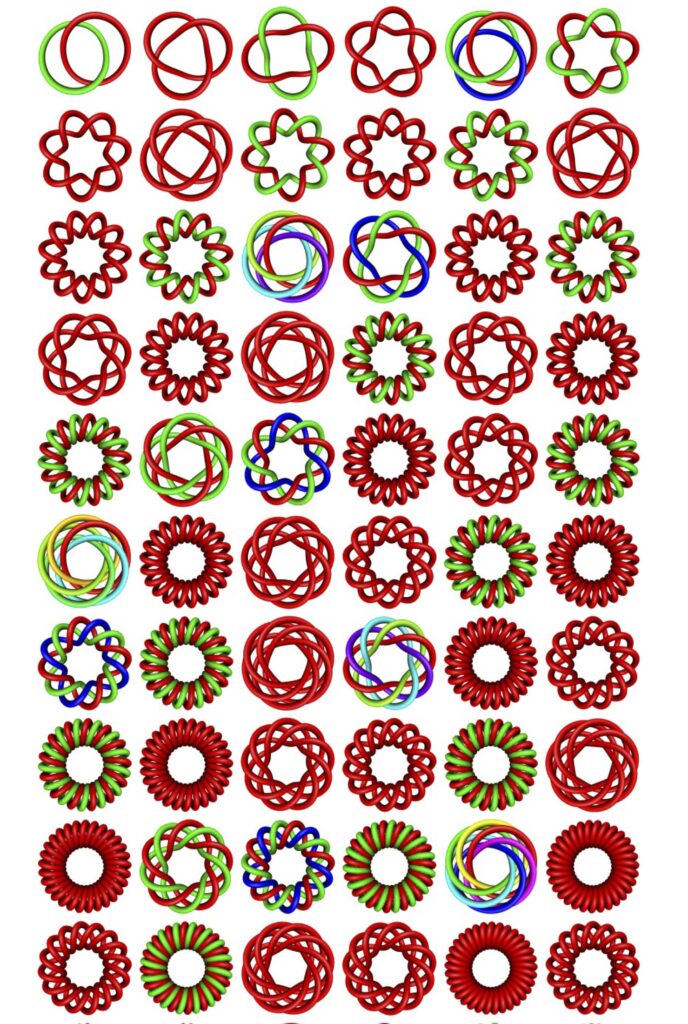
Two knots in the table above are worth focussing on because they appear in many contexts. One is the trefoil, which is the (2,3) torus knot, and the star knot, which is the (2,5) torus knot.

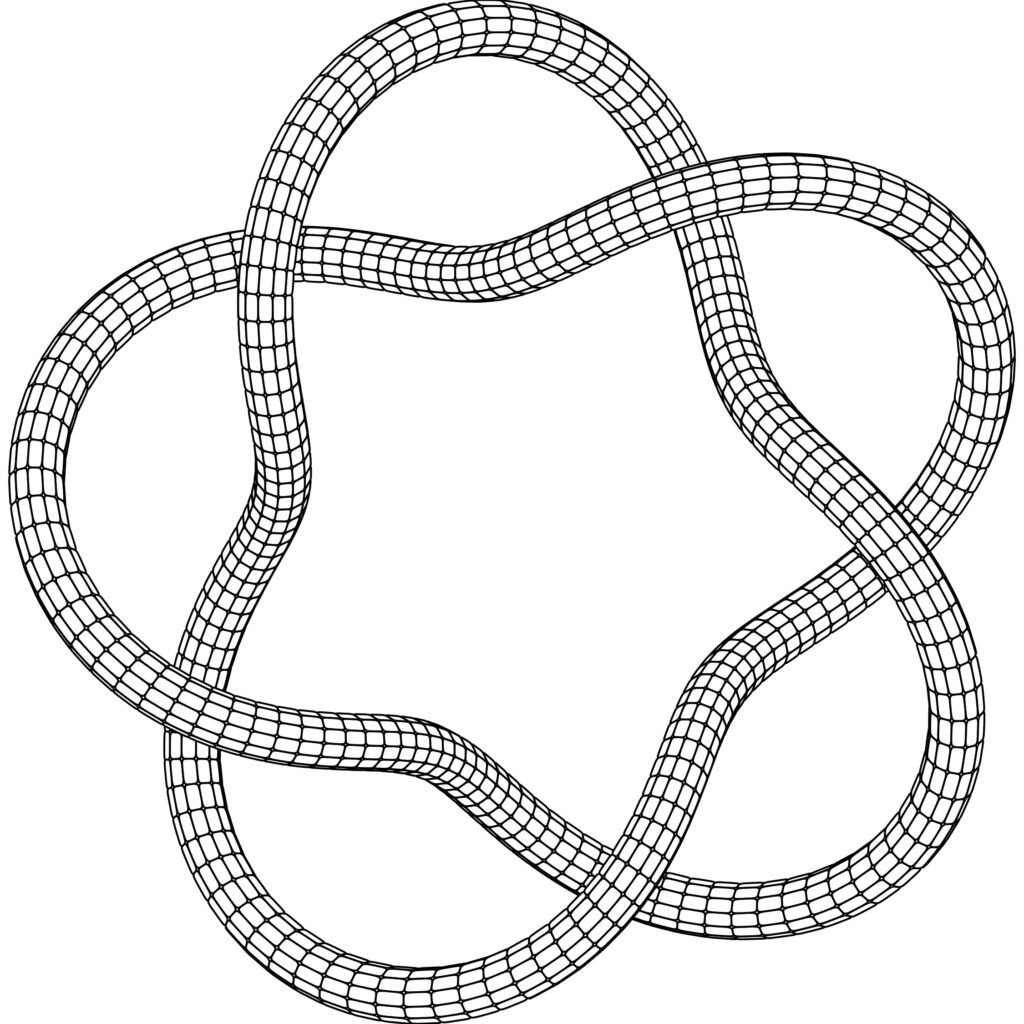

Another way to make a knot is to begin with a knot you already have and follow it all around again, so you now have two strands tracing the knot pattern parallel to one another. There are two approaches here. In the first, called cabling, we get a new component for each original component. We can cable any number of times, making a 2-cable, a 3-cable, and so on. At right is a 4-cable of the trefoil. An important point is that there are four components, so it is a link but not a knot.

In the second approach, we think of the original knot as an open loop, and we continue the string to do the tracing. After tracing the knot for some number of repeats we connect the open ends. The result is called a satellite knot. At right we have a satellite knot of the trefoil. Note that at the bottom one can see the two strands crossing — connecting so that the whole knot is one loop. There are no such cross-connections in cabling, hence there are four components in the cabled trefoil above.
Satellite constructions have practical uses. In climbing, the knot often used to secure a climber’s harness to a rope is a satellite of an open figure eight, as depicted to the right. Coasters and floor mats are sometimes made with satellite constructions.

